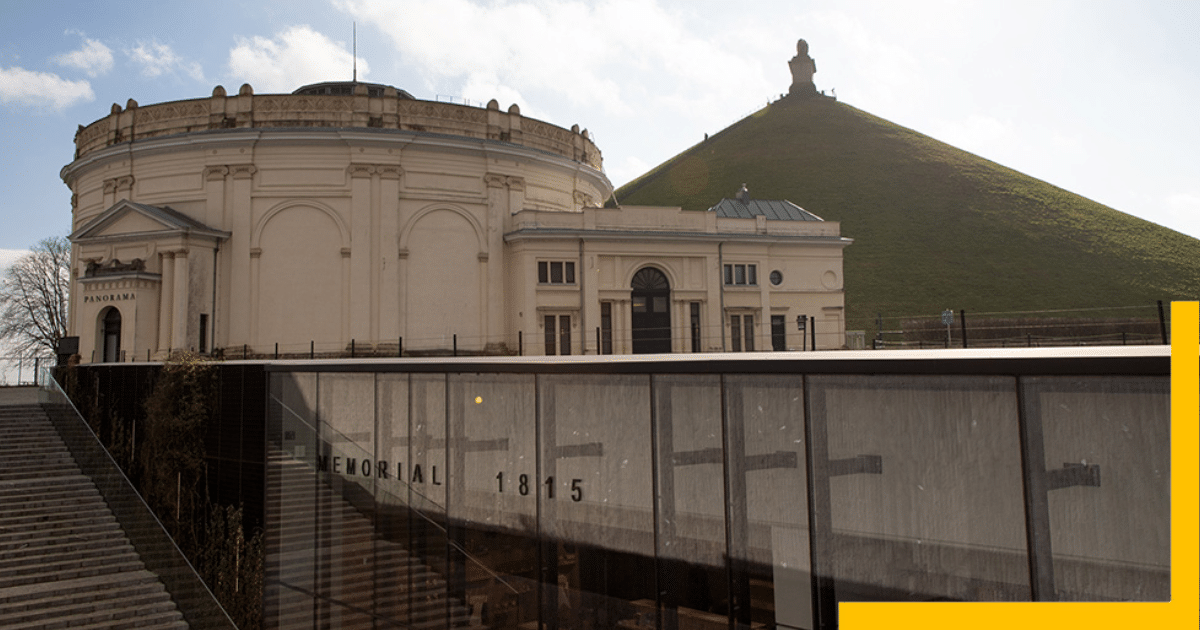Waterloo, Belgium: Where Napoleon met his Waterloo
Contents
The Enduring Allure of Waterloo: A Historical and Global Perspective
History buffs have long been drawn to the allure of Waterloo, the renowned battlefield situated 18km south of Brussels, Belgium (contrary to popular belief, it is not in France!). However, even for those less inclined toward historical pursuits, Waterloo has a unique fascination owing to its profound impact on European history and the broader global order.
I do not consider myself a student of history. My entire understanding of the Napoleonic wars is derived from Tolstoy’s “War and Peace” and my historian husband’s unending enthusiasm for all things related to history.
RELATED: Explore Florence: Your Ultimate Travel Guide
Waterloo: The Turning Point in Napoleonic Wars
Waterloo earned its place among the most renowned battlefields in history after Napoleon’s decisive defeat on 18 June 1815. In this pivotal battle, Napoleon faced a formidable coalition force led by the Duke of Wellington, General Blücher of Prussia, and Prince William of the Netherlands, assembled by Britain.
The French defeat at Waterloo marked the conclusion of a 23-year period of warfare that began with the French Revolutionary Wars in 1792 and extended through the Napoleonic Wars from 1803 onward. It signified the cessation of Napoleon’s ambitious conquests.
Waterloo’s Transformation: A Pilgrimage Site for the Greats
In the aftermath of the Battle of Waterloo, this hallowed ground quickly evolved into a pilgrimage site for notable figures such as Victor Hugo and Lord Byron. Inspired by the footsteps of these illustrious personalities, I, too, envisioned a visit to this historic site.
Did you know !
The Battle of Waterloo, which took place on June 18, 1815, was a decisive conflict that led to the downfall of Napoleon Bonaparte’s rule and his exile to the remote island of Saint Helena, where he spent the remainder of his life.
The Iconic Lion’s Mound and Other Attractions

The museums in Waterloo may only attract history enthusiasts, but the splendid Lion’s Mound, which is an artificial hill raised on the battlefield of Waterloo, is alluring for all. This 40-meter hill was erected at the spot where Prince William of the Netherlands was wounded during the war. The more prominent hero of the war, Lord Wallington, did not like the idea and, in his later visit to Waterloo, exclaimed: “They have altered my field of battle!” Maybe he wanted a more noticeable monument for himself.
The statue of a lion positioned at the top of the mound symbolizes the victory of monarchies. You can look over the entire battlefield from the top of the hill.This view is outstanding. But to get to the mound’s summit, you would have to climb 226 steps! These steps were so steep that my feet kept on hurting for two days after coming back from Waterloo.
But it was totally worth it. Near the foot of the mound, there is a visitor’s center that shows movies about the Battle of Waterloo. In summer, they also offer a 45-minute tour of the battlefield on a truck. The battle of Waterloo is also re-enacted every year on the original battlefield. Over 1000 volunteers from all over Europe take part in this event.
The Panorama and Wax Museum: Immersive Battlefield Experience
The Panorama is situated next to the visitor’s center. It was built on the 100th anniversary of the battle. It is a circular building that houses a painting of the battlefield by French painter Louis Demoulin. Inside the building, the panoramic view given by this painting gives a feeling as if one is in the middle of the battlefield. Opposite the Panorama is the Wax Museum, which features statues of the main protagonists of the battle.
Here, you will also find skulls of the soldiers that were later dug up from the battlefield. It is not possible to distinguish the French skull from the Prussian or the Dutch skull – something that glorifiers of war never bother to realize.
Wellington Museum: A Glimpse into the Duke’s Headquarters
Near the city center, you’ll come across the Wellington Museum. Prior to the battle, this building served as an inn, but it was here that the Duke of Wellington established his headquarters. Today, it stands as a museum showcasing personal mementos of the Duke, along with those of other heroes of the battle.
The exhibits include uniforms, weaponry, and detailed maps of the battlefield. Significantly, it was from this very location that the Duke composed his report of victory and dispatched it to Britain. In the museum’s souvenir shop, I discovered a reprint of a British newspaper dated 22 June 1815, heralding the “breaking news” of the English triumph over the French, with primary credit accorded to the Duke.
Did you know !
The Wellington Museum in Waterloo, Belgium, is located in the house where the Duke of Wellington, spent the night before and after the Battle of Waterloo (18 June 1815).
Wellington’s Church and Napoleon’s Legacy Museum
Adjacent to the museum stands a church where Wellington purportedly sought solace in prayer before embarking on the battlefield. Separately, there is a museum dedicated to Napoleon, situated a short distance from the other monuments. Housed in a farmhouse that served as Napoleon’s final headquarters, it provides further insight into this historical figure’s legacy.
Waterloo’s Global Impact: Cities and Station Controversy

Battle of Waterloo had a great impact on world history and to commemorate this eventful battlefield several cities in the world have been named after that. In London, the central railway terminus is also named after it.
In 1998, after Waterloo station was chosen as the British terminus for the Eurostar train service, a French politician, Florent Longuepée, demanded that the British Prime Minister Tony Blair should change the name of Waterloo Station.
He said it is distressing for the French to be reminded of Napoleon’s defeat when they arrive in London. He even threatened that if nothing is done he will campaign to have Gare Du Nord station in Paris renamed Fontenoy. A reference to a lesser-known battle in which the French beat the English.
Waterloo’s Influence on Art and Literature: Victor Hugo and Leo Tolstoy
The attention garnered by this battle and its historic site from many eminent artists, authors, poets, philosophers, and filmmakers is genuinely remarkable. Among the most revered literary works depicting both the battlefield and the Battle of Waterloo is Victor Hugo’s renowned novel “Les Misérables.”
In 2011, special tours and events were organized to commemorate the 150th anniversary of this monumental work. Another masterpiece that delves into Waterloo is Tolstoy’s “War and Peace”. Tolstoy’s portrayal convinced me that Napoleon was a diminutive, portly, and ostentatious French emperor, waging a global struggle for personal glory and the fulfillment of his ambitions. He offered a self-serving justification for the war he thrust upon the world.
Contemplating Historical “What Ifs” at Waterloo
During my visit to Waterloo, as I listened to the tour guide’s effusive praise of the British army and Empire, my aversion to British Imperialism surged. It led me to ponder that perhaps history might have taken a different turn if Napoleon had met his Waterloo in Moscow!



